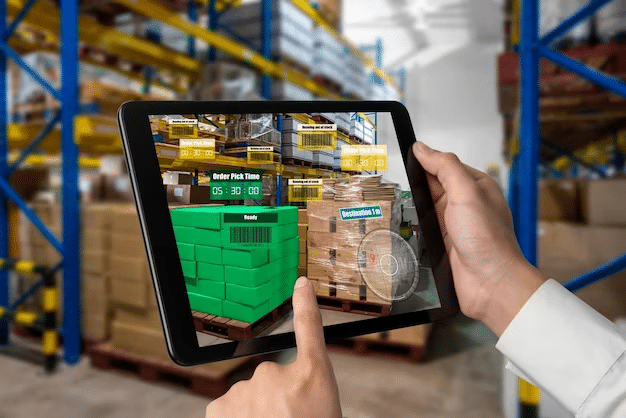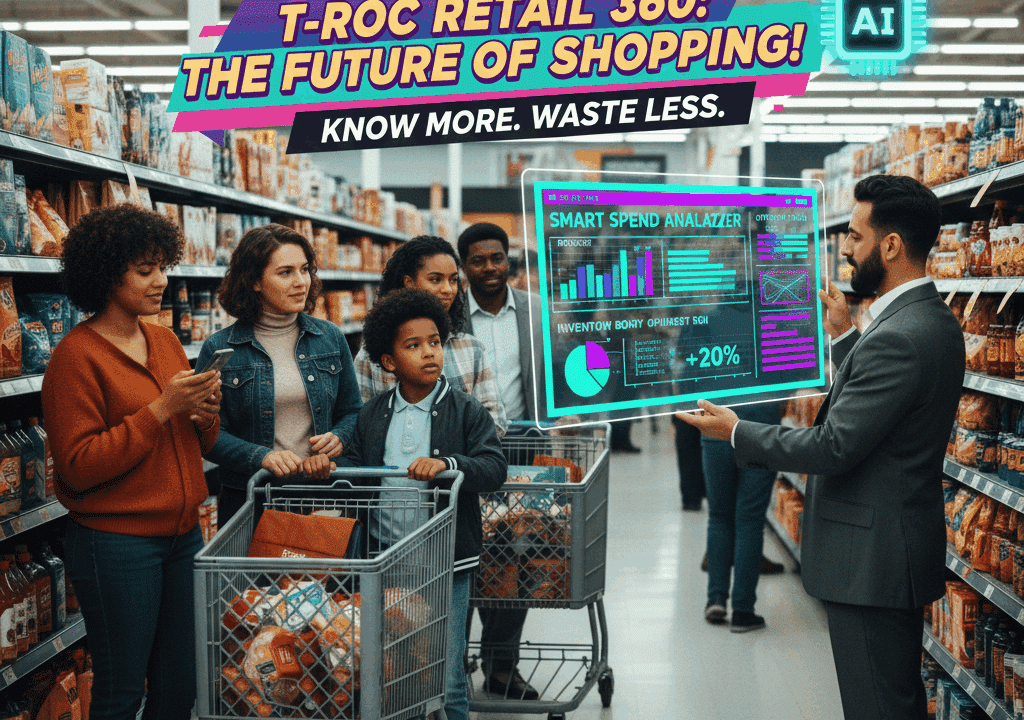
How Big Data Problems are Solved in the Retail Sector
The retail sector is one of the largest and most important parts of the global market, accounting for trillions of dollars in revenue every year. Accordingly, the retail industry is also among the first impacted by breakthrough business technologies. In recent years, big data analytics have revolutionized the way retailers operate.
By leveraging the power of data science, retailers can gain valuable insights to optimize pricing strategy, supply chain management, customer segmentation, and more. But as transformative as big data analytics can be, it also comes with unique challenges.
If you’re wondering how big data problems are solved in the retail sector, keep reading.
Want to leverage the power of big data for your retail business? Get in touch with us today
Big Data Problems in the Retail Sector
Big data is the collection and interpretation of large amounts of complex data using modern technology solutions. Big data not only involves a massive amount of information but also messy, elaborate data sets that could not be easily analyzed through traditional retail marketing analytics.
Big data can be incredibly useful, but there are some common pitfalls that retailers may encounter when using these large, complex data sets.
Accuracy of data
The quality and accuracy of data are crucially important for retail success. Retailers often run into trouble when bad-quality data is harvested using the wrong methods. For example, a customer survey with less than one hundred respondents won’t provide the statistical validity and deep insights that retailers need to make informed decisions about customer satisfaction.
The best approach to collecting accurate data is to invest in a leading software solution or partner with a reputable retail analytics firm. By collecting information from a variety of data sources, like CRM data and supply chain logistics, retailers can avoid drawing false conclusions from bad data.
Regulatory compliance
Customer privacy is of the utmost importance in the online retail space. It can be particularly challenging to comply with privacy standards in the international market, with regulations like the General Data Protection Regulation (GDPR) setting guidelines for the protection and collection of customer data in the European Union.
Keeping up to date with the latest changes in regulatory compliance can be a problem for retailers when it comes to legally collecting data. Not to mention, there’s also the challenge of properly storing customer data to prevent it from being shared with other parties.
Retailers can stay abreast of all privacy and compliance requirements with the help of a strong company policy and regular staff training regarding customer data, among other solutions.
Customer trust
Some of the most valuable retail data can’t necessarily be harvested through analyzing purchase history and pricing strategy alone. Often, the best data must be divulged by the customers themselves.
So, one of the biggest challenges retailers face is to build enough trust with existing customers that they are willing to share their personal information and opinions.
There are a few simple ways retailers can gather valuable customer data, such as offering a discount or prize in exchange for completing a survey or sharing contact information. But really, it’s a long-term process that involves focused branding and advertising, as well as a safe and straightforward data collection strategy.
Appropriate technology
Big data analytics depend on advanced technologies like machine learning and automation to deliver accurate insights. The problem is that in today’s fast-paced technological environment, the latest technologies can quickly become irrelevant.
Retailers should stay up to date with the newest data science technologies to remain competitive. Without the appropriate technology solutions, businesses in the retail sector can miss out on valuable data.
How to Approach Big Data Analytics
It’s clear that there are some challenges to using big data for retail business. But every potential problem posed by big data also has a solution. There are several steps retailers can take to make sure that big data analytics are handled properly.
- Define goals – Before even the smallest morsel of data is collected, retailers should know exactly what they want to achieve from obtaining that data. Maybe there’s been an unexplainable dip in customer satisfaction. If so, the goal would be to understand why customers are unhappy and what the retailer can do to improve customer service.
- Determine metrics – Once goals have been defined, retailers need to determine the right way to measure data. Depending on the goal, retailers can look at quantitative data like sales numbers or qualitative data like customer satisfaction.
- Collect data – Retailers collect data from both quantitative and qualitative sources for the deepest insights. Big data analytics can make sense of mountains of unstructured data from emails, chat conversations, product reviews, and more.
- Analyze data – Structured data can be analyzed using traditional data analysis tools like Excel, while unstructured data can be analyzed through methods like text analysis, predictive analytics, and inferential analysis.
- Interpret results – Finally, data can be summarized using visualization tools to assist retailers in spotting patterns and trends.
Making Sense of Unstructured Data to Improve Supply Chain Management
Arguably the biggest advantage of using big data analytics is the ability to create meaningful data sets from large amounts of unstructured data. Organizing unstructured retail data isn’t just useful for gaining customer insights, it’s also a great way for retailers to improve supply chain management.
Supply chain analytics involves a broad set of aggregated data from multiple sources, such as procurement, inventory, warehousing, and fulfillment. But most of that data is unstructured and difficult to organize. With the appropriate big data analytics solution, retailers can improve inventory management and other aspects of their supply chain by:
- Forecasting product demand and supply chain delays
- Performing predictive maintenance
- Using Internet of Things (IoT) sensors to monitor warehouse workflow
- Tracking shipments in real time
Benefits of Big Data Analytics in Retail
Beyond supply chain management, big data analytics provide a multitude of benefits for retailers, such as:
- Predicting customer buying habits – Big data analytics can help uncover customer attitudes and predict which products they are most likely to purchase.
- Personalizing marketing efforts – By analyzing demographics and customer behavior, retailers can segment customers and tailor marketing campaigns to appeal to their niche tastes and preferences.
- Detecting and preventing fraud – Analysis of transactions, browsing habits, and other types of historical data can help to reveal suspicious behavior and avoid potential fraud.
- Accurately forecasting – Demand for retail products can change in an instant. Analytical data allows for real-time retail market insights so product offerings can be adjusted quickly.
Implementing Data Governance
Many big data problems in the retail sector are caused by a lack of data governance. By effectively managing retail data to ensure its accuracy, consistency, and overall data security, retailers can ensure that appropriate decisions are made, and data is protected from unauthorized access.
Ensuring Accuracy and Consistency of Data
Not all data is created equal – in fact, some of it can be quite bad. A data quality management policy reduces the risk of drawing false conclusions from bad data by providing retailers with greater consistency and accuracy. By implementing a data quality management strategy, retailers can identify errors, correct discrepancies, and ensure that all data is up-to-date.
FAQs
How can big data help retailers?
Big data can help retailers by providing deep insights into operations, resulting in personalized customer shopping experiences, accurate forecasts of the latest retail trends, and improvements in supply chain management, among other benefits.
How can the challenges of big data be resolved?
Big data challenges can be solved by most retailers through the use of accurate data and appropriate data analytics technology, along with consistent regulatory compliance and efforts to maintain customer trust.
How has big data changed the retail industry?
Big data has changed the retail industry by giving retailers the ability to optimize pricing, streamline shipping, and boost customer loyalty without relying on outdated marketing analytics technologies.









